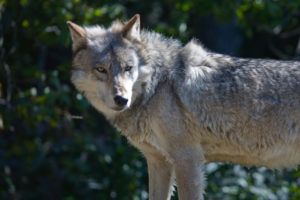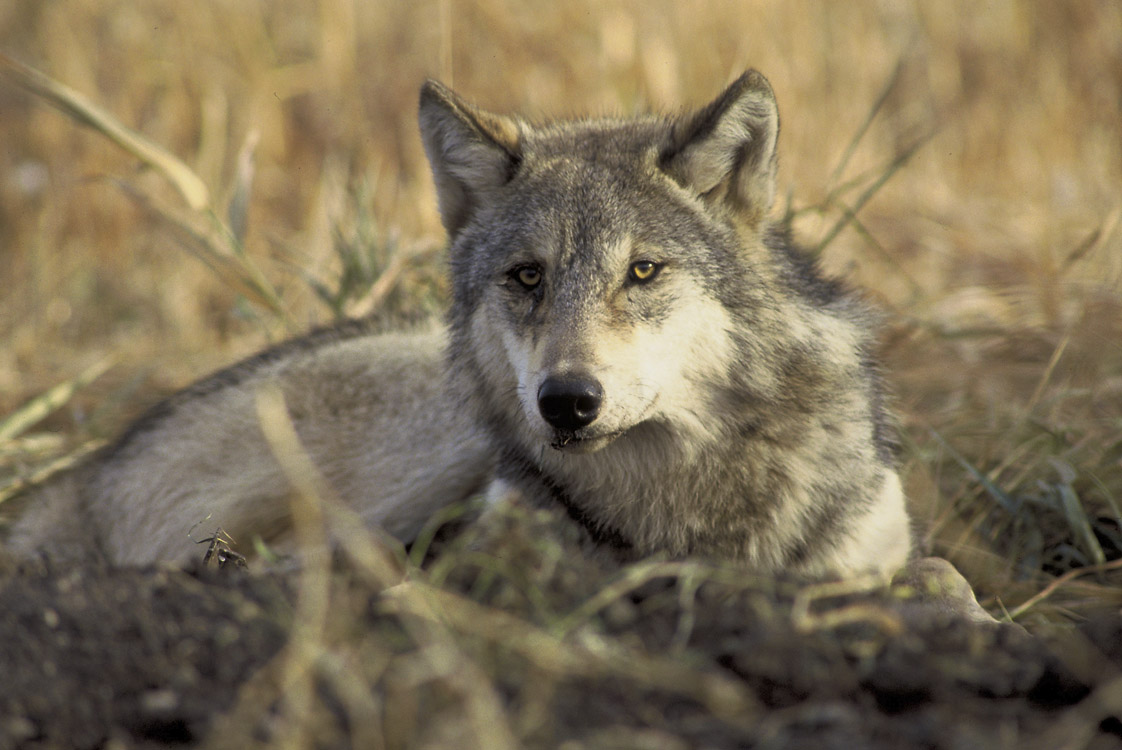A federal judge, reversing a Trump administration decision, has restored protection of the gray wolf (“canis lupus”) under the Endangered Species Act over much of the lower forty-eight states including Washington, Oregon and California.
U.S. District Judge Jeffrey Lee ruled that the U.S. Fish & Wildlife Service delisted the wolf based on analysis of just two core wolf populations and failed to provide a reasonable interpretation of the “significant portion of its range” standard.”
The judge’s ruling protects wolves in the Great Lakes Region, West Coast states and the Southern Rockies.
It does not apply to Idaho, Montana and Wyoming, where state officials have enthusiastically encouraged the “culling” of wolf populations.
After removal of wolves from the Endangered Species list, controversy revolved over such happenings as a “cull” in Wisconsin last year in which 200 wolves were killed in less than 60 hours. The state had set a quota of 119 kills.
Wolves are admittedly savage hunters, but savagery has often applied to two-legged creatures that hunt them. A family of Methow Valley ranchers was convicted of killing wolves and then trying to ship bloody pelts to an address in Alberta. Nearly twenty wolves have been killed this season when they wandered outside boundaries of Yellowstone National Park.
Visitors to Denali National Park in Alaska have long watched wolves in the Toklat Valley along the park road. But there is a dent in the park’s boundary, north of the road, down which hunters have traveled and slaughtered Toklat wolves.
The U.S. Fish & Wildlife Service has undertaken a study of lower forty-eight wolves – centered in states not covered by Judge Lee’s ruling – because “increased human caused mortality in Idaho and Montana may pose a threat to wolves in those states.”
Hunting groups have decried Lee’s ruling as that of “an activist judge”. He was nominated to the federal bench by President George W. Bush in 2002.
Kyle Weaver, CEO of the Rocky Mountain Elk Foundation, has claimed the wolf population across America is “stable and growing.”
Not so, argued such environmental groups as Earthjustice, the Center for Biological Diversity, Defenders of Wildlife and the Humane Society.
Suing the U.S. Fish and Wildlife Service, they argued in particular that recovery of “West Coast wolves” would be hindered by delisting.

“I’m relieved that the court set things right but saddened that hundreds of wolves suffered and died under this illegal delisting rule: It will take years to undo that damage to wolf populations,” said Collette Adkins of the Center for Biological Diversity.
Wolves were largely exterminated in the “lower 48” early in the 20th Century, systematically eliminated even in Yellowstone Park. Only about 1,000 remained, mainly in the Boundary Waters region of Minnesota, when protection was extended under the 1973 Endangered Species Act.
Wolves began to move south from Canada into the Rockies and Cascades in the 1970’s. “Reentry points” were the Flathead Valley in Montana and the Skagit River in Washington.
The reappearance of canis lupus set up confrontations between some ranchers and conservation groups. USFWS hearings featured “howl ins” by wolf supporters, with ranchers testifying to the brutal deaths of their sheep. “Wolves eat sheep,” famed conservation writer Ed Abbey wrote in praise of canis lupus..
The earliest wolf return to Washington was the sighting of a wolf sauntering through a playground at the north end of Ross Lake in Canada. A den was subsequently discovered on slopes of Hozomeen Mountain, just south of the border. The repopulation has led to packs in the Chelan-Sawtooth Wilderness Area, and in the west fork-Teanaway River north of Cle Elum.
The protection of wolves in Washington has been split by a highway. West of U.S. 97, which runs north-south through Central Washington, wolves are covered under the Endangered Species Act. Until Judge Lee’s ruling, however, the state had jurisdiction east of the highway. State hunters have exterminated wolf packs in response to ranchers in northeast Washington’s Ferry County.
Wolf recovery was controversial even in Yellowstone Park. After Republicans recaptured control of Congress in 1994, the Clinton administration worried that reintroduction of canis lupus would be blocked by legislation. U.S. Interior Secretary Bruce Babbitt helped set loose 31 animals in the national park.
The wolves are since credited with a big role in restoring the Yellowstone Ecosystem, controlling ungulate populations, in turn restoring such vegetation as juniper trees overgrazed by elk.
Visitors in the northeast corner of the park, equipped with binoculars, could watch wolves hunt from the trail behind Soda Butte.

